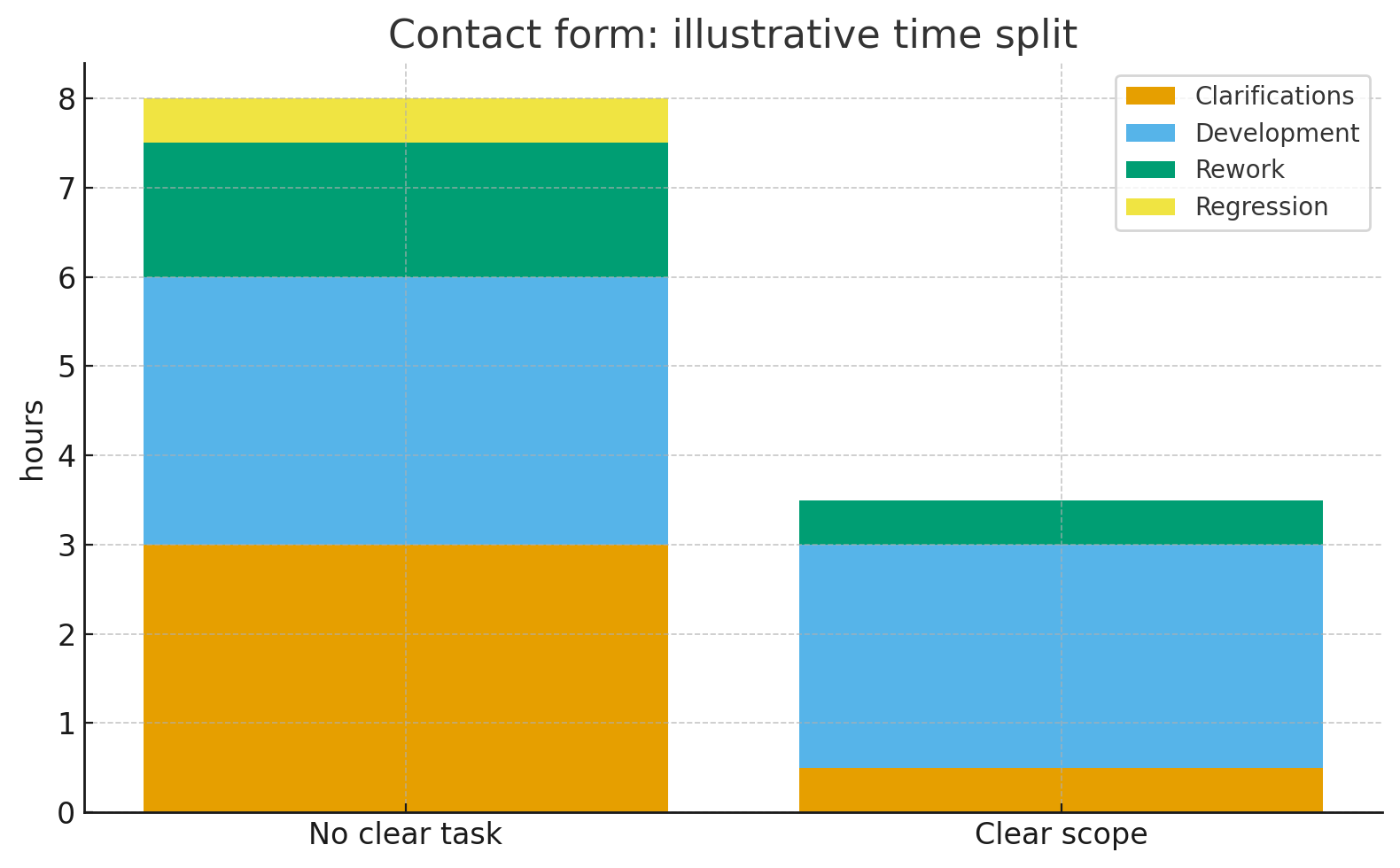Scoping Saves: Why a Clear Task Is Cheaper to Build
A well-written task saves time for everyone: fewer clarifications, fewer reworks, and a calmer release. We mostly build with Laravel, but the approach works in any stack.

Where time gets lost before coding
Problems start with vague wording. A task says “make a form,” but not why it is needed, which fields are required, or what the user should see on error. The team guesses, changes appear during development, and the deadline slips.
Hidden limits then appear: languages, user roles, speed and security expectations. If you remember these at the end, you redo work and test again. Another issue is planning only the happy path. Empty states and error messages are added later and take extra rounds. Finally, when “done” is not defined, each person imagines it differently, and the feature sits in “almost done.”
What a clear task includes
- Why we do this: user or business value.
- Scope and out of scope: what we include now and what we do later.
- When it is done: a few checks the team can verify.
- How it looks: sketch or screenshot, button labels, success and error texts.
- Limits: languages, roles, speed, security.
- Who answers questions: one named contact.
Mini-case: a contact form (very simple)
Task: a form with three fields; it sends an email to support@.
Without a clear task
The scope is “make a form.” During work you add a consent checkbox, translations, length limits, anti-spam, a success screen, and an analytics event. Each addition means another round and repeat testing.
With a clear task
- Goal: simple way to contact us; we track the share of successful sends.
- Fields: name (2–100 chars), email, message (≤1000); consent checkbox is required.
- Behavior: clear error messages; on success show “Thanks, we will reply within 1 business day.”
- Spam control: up to 3 attempts per hour from one address + hidden honeypot.
- Email: send to support@isapp.be, subject [Contact] Name.
- Done = email sent; success screen shown; empty and error cases handled.
Timing example: without a clear task 6–8 hours, with a clear task 3–4 hours.

How to write a task in 15–30 minutes
- Goal and boundaries (5–10 min). Why we do it; what we do not do now.
- Definition of done (5–10 min). What the user should see; which data is valid.
- Look and text (5 min). Sketch, buttons, success/error messages.
- Limits (5 min). Languages, roles, speed/security, spam control, who answers questions.
Common mistakes
Several goals in one task; no out-of-scope; no error/empty states; defining “done” at the end. All of these cause extra rounds and delays.
Mini template (copy and fill)
Why: …
Do now / not now: … / …
Done when: 1) … 2) …
Looks like: link to sketch/screenshot; button and message texts
Limits: languages, roles, speed/security, spam control
Where to send email/data: …
Contact: @name
Get in touch
Have a project
in mind?
Tell us the context and the outcome you want. We’ll reply within 1 business day with the simplest next step (timeline, rough budget, or quick audit).